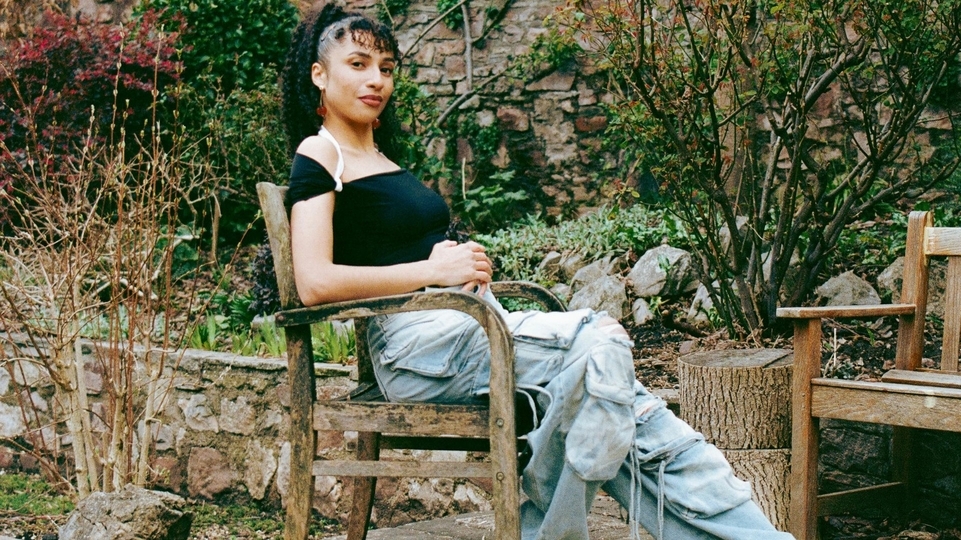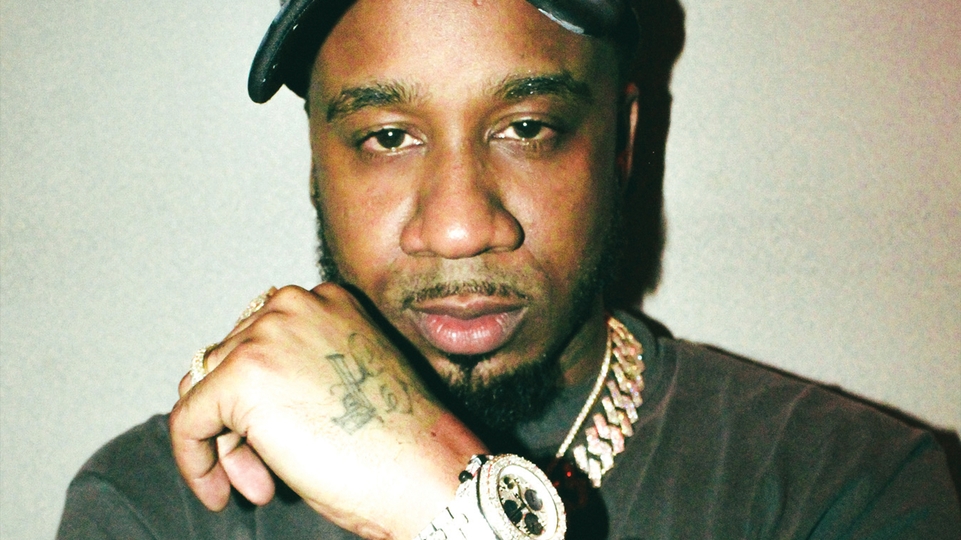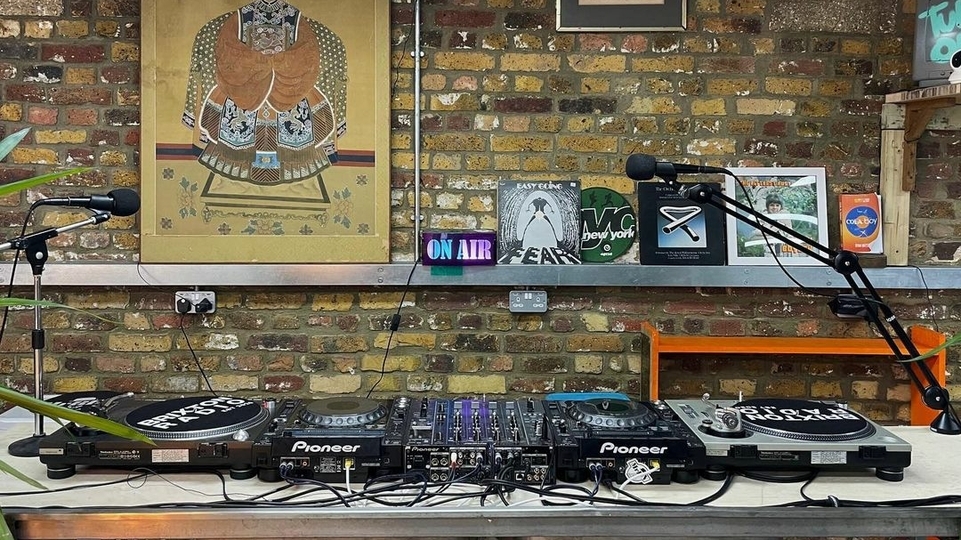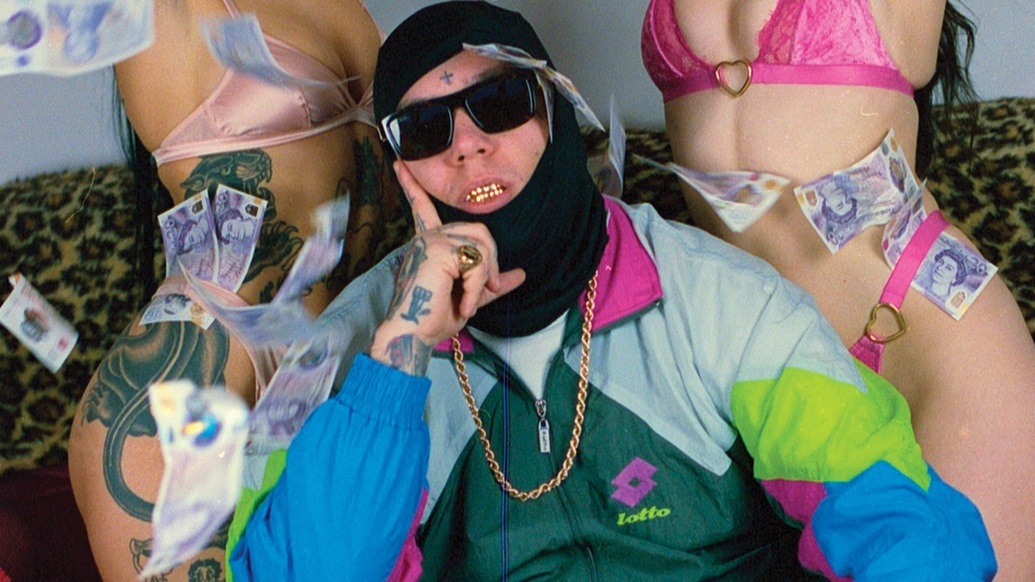
Meet the MC: TRAPY
Tattooist-turned-rapper TRAPY speaks to Amy Fielding about his favourite Marvel characters, obscure samples, and his reason for anonymity
Framed by white curtains and stood against the red brick tower blocks of the city, West-London born, British-Serbian artist TRAPY looks down from a window at his beloved London — the place he says he’ll never leave — with the capital’s name inked in striking, bold letters across his shoulder blades. It’s grey and miserable, like the capital mostly is — but he adores it. The image is a still from the video for his new track, ‘MILLIE’, and it’s the very first taster of his forthcoming debut mixtape as TRAPY.
There’s a chance you already know of TRAPY, be it from his tattooing moniker Traphouse, or his graffiti tags that embellish buildings across the world. He’s inked everyone from A$AP Rocky to Skepta, and prior to the pandemic, travelled every other week to different cities to tattoo his designs of girls in Louis Vuitton-clad bikinis, souped-up sports cars, Stone Island badges and Nokia 3310s onto the fans of his tongue-in-cheek style of Y2K body art.
With the down-time of the pandemic last year, and the subsequent closure of tattoo shops, TRAPY finally had the time to focus on one project he’s been chipping away at behind the scenes: his music. Brutally honest about his beginnings, music has been the MC’s constant, keeping him focused and centred, even during his turbulent, formative years. “I went to go and live with my dad at 13, and we were homeless,” TRAPY says over the phone, taking long pulls on a cigarette and considering his words carefully before articulating them in a deep London accent. “The council gave us temporary accommodation in a couple of different places, so we bounced about before we got a permanent flat. Obviously, in those days, moving around... I was a little demon.”
From being arrested “almost every weekend”, to being banned from his friends’ houses by their parents, he was a self-confessed troublemaker. “Even through all that though, I’d still go back to West (London) for youth club because they had a music programme there,” he says. “Fruity Loops was the only thing around, and that’s where I first learnt to make beats.” He’d go and see his friends in Fulham, watching their older brothers making tracks, and eventually managed to get his hands on a CD copy, as well as a computer.
“My cousin gave me a PC. It was a big fucking monitor with an arse on it, and a PC tower that would hum, with those two little Logitech speakers and sub that everyone had. I was aggressively poor for a long time,” he continues, earnestly. “I never had no internet, no landline, nothing. The only way I could make music was to sample from CDs I’d stolen, or go to the charity shops and get like five CDs for £1 or whatever.”
HIDDEN GEMS
The impact of those early brushes with production, though, are integral to TRAPY’s music-making process now. He produces all his own beats, sampling old soul and funk records, as well as hip-hop and rap, chopping and screwing tracks he heard growing up, and still using FL Studio to do it now. His digging for hidden gems and diverse tracks to sample is largely due to his father too, who’d make a young TRAPY listen to whatever he was playing at the time.
“He never played (instruments), or made anything — but he was an avid consumer of all genres,” he explains. “I’d be in the motor with him, and he’s got a tape or an album, and he’s telling me, ‘You need to know who those people are’. We’d go on a car journey and go from Smokey Robinson to Metallica, then it’d be Prodigy and Sizzla.”
TRAPY initially dropped his first mixtape back in 2016, under his Traphouse Tyler alias. It wasn’t really the right time for him though, and the focus turned back to tattooing for a little while. He’s a private person, and it’s a time he isn’t willing to delve into. “During the last couple of years as Traphouse, I’ve gone through a lot of shit,” he says. “A lot of bad things have happened. I got nicked like three times, I’m just not shouting about that shit online.”
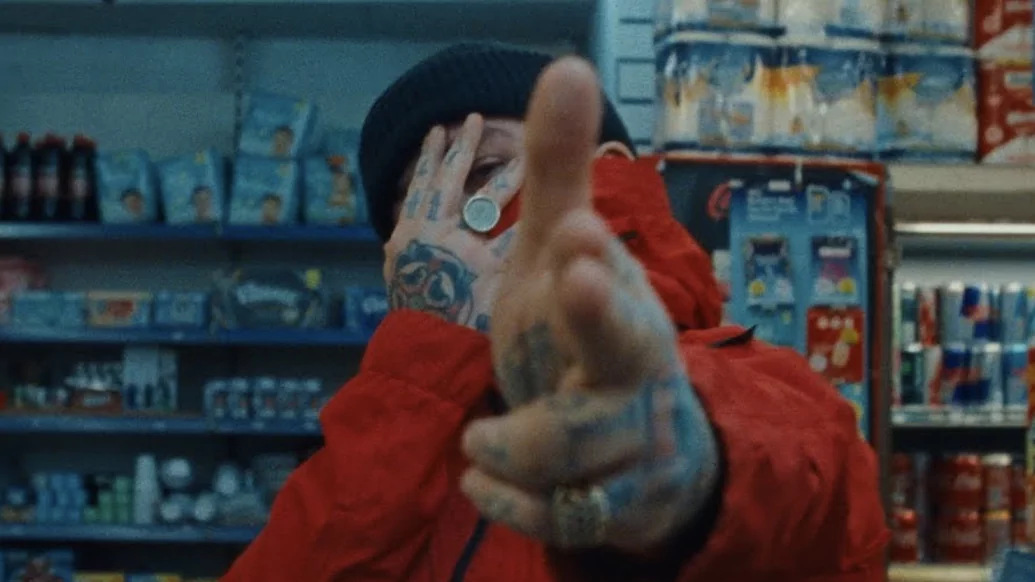

“MF DOOM is King. And Tony Stark is King. He’s the best Avenger, and if you know me personally, I’m very similar... obviously he’s got more money though.”
When it comes to TRAPY’s online activity, the MC’s presence is big — he’s got 50k followers on his tattoo account — and his interaction with his fans is one of the things that sets him apart from other creatives. He’s constantly engaging with his followers through questionnaires on his stories, offering those struggling in their own heads a place in his DMs, and pushing the message that you should unapologetically be yourself.
One thing that the fans definitely won’t see, however, is TRAPY’s face. Even when he began tattooing, he wore masks, face coverings and balaclavas to protect his anonymity, and it’s something he’s never compromised on. Speaking about his decision to hide his identity, it doesn’t just stem from run-ins with the law, but also with making sure the focus — initially with tattooing, and now with music — stays on his creative output, not his image.
“I’m still guilty of what everyone else is though,” he says, speaking about his social media presence. “I only show my best online, like everybody does. I try and be as transparent as I can, but to a degree I am curating what I share. When I do pick up my phone, and I’m in high spirits, that’s when I want to interact. There’s periods of silence because when I’m going through shit — I don’t want to share.”
ANONYMITY
In January this year, the MC announced ‘MIXTAPE’, alongside the aforementioned single and video, ‘MILLIE’. Available now through YouTube, the project is a way for TRAPY to shed some of the anonymity and mystery that shrouds his life, telling stories and relaying deeply personal memories through lyrics. “That’s where people are going to get the full spectrum of me,” he says. “It’s an introduction to the real me, what I’m about and what I can do — singing, rapping, rhyming... all of that. It’s the one place where I can be very open about me.
“As a consumer, when I look at or listen to something that’s been created, I want to learn about who made it, and what’s going on in their lives. I do very well communicating openly in music. All that shit I say and do to keep up the privacy — this is my outlet.”
TRAPY already has his next three projects lined up, too. It’s a trilogy of mixtapes, centred around Marvel Comics character Tony Stark, aka Iron Man. It’s full of feel-good disco, soul and funk samples, ranging from Robin Beck’s 1979 hit ‘Sweet Talk’ to Armenta’s ‘I Wanna Be With You’, released by Savoir Faire Records back in 1982. They’re not the typical, rinsed-out samples you hear in hip-hop or rap, and that’s a conscious decision from TRAPY. When the MC travels, he makes a point of stopping into record stores and second-hand shops across the world, sourcing old vinyl and CDs purely for sampling purposes. “Funk and soul is what I actually listen to, but I’m not that person...” he trails off, before laughing. “If I was born in a different time — trust me I’d be the lead singer of a funk band, and I’d be on SMOKE.”
TRAPY was inspired to write the Iron Man tapes after the recent death of one of his heroes, MF DOOM. With the instrumentals inspired by DOOM’s back catalogue, TRAPY wanted to pay his respects via music, and taking on a character — akin to DOOM’s affiliation with Marvel Comics supervillain, Doctor Doom — felt like the right way to do it.
“MF DOOM is King. And Tony Stark is King. He’s the best Avenger, and if you know me personally, I’m very similar... obviously he’s got more money though,” TRAPY says, laughing at himself again. “He saves the world, and I have a big humanitarian plan at the end of this. I know that might sound surprising, but I’m gonna make an impact and a difference with my music and what I do.”
TRAPY’s end goal it seems, ultimately, is to make people feel good, and give back to those around him. His experiences during his childhood, and growing up on estates surrounded by basketball courts and football pitches, have sparked an idea for a concept called 72 Sport — a programme which would see young, underprivileged people spend a day with successful artists and entrepreneurs in those settings. “A lot of people who are super-famous or in successful fields met someone famous or successful when they were young, and it unlocks something in their mind,” he says. “If some of these celebrity types would just spend a day with kids during the school holidays, interact with them, show them they’re a real person — I know it would make the difference. It unlocks potential, and I want to take that formula everywhere.
“Put it this way. I’ve got a gold chain on right now. I can’t see it, it hangs on my chest, under my shirt. But if I put it around your neck, I see it all the time, and that makes me happy. The things I do with music, and the stuff I’m gonna do as I grow — I wanna do things that just make people happier. You can’t take the value of that anywhere else in the world.”
